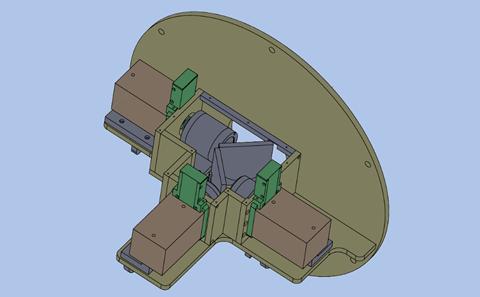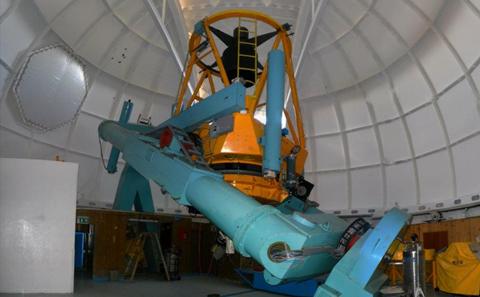
Instrument
OPTICAM will simultaneously acquire images using 3 sCMOS Andor Zyla 4.2-P cameras and 3 of the 5 SDSS filters.
OPTICAM is a high-time resolution 3-colour truly simultaneous optical imaging system for the 2.1m telescope of the San Pedro Mártir (SPM) Observatory in México. SPM is one of the top-four sites to perform optical Astronomy. OPTICAM is being built as a collaborative work between the University of Southampton (UoS) and the Institute of Astronomy of the Universidad Nacional Autónoma de México (IA-UNAM).

OPTICAM will simultaneously acquire images using 3 sCMOS Andor Zyla 4.2-P cameras and 3 of the 5 SDSS filters.

OPTICAM will operate as a common-user instrument at the OAN-SPM 2.1m (f/7.5) telescope.

OPTICAM will serve at the Observatorio Astronómico Nacional (OAN) at San Pedro Mártir (SPM) in Baja California, México.
This new instrument will be equipped with three 2,048×2,048 pixel Andor Zyla sCMOS cameras and a set of SDSS filters allowing optical coverage in the 320–1,000 nm range. OPTICAM will nominally allow sub-second exposures, however, even higher frame readout speeds can be reached as a function of the pixel array size.
Due to the high-performance profile of the instrument, a wide range of fast-variability astrophysical objects can be targeted including X-ray binaries, pulsating white dwarfs, accreting compact objects, eclipsing binaries and many others. Observations taken with OPTICAM will remain proprietary for only six months and then will be made publicly available for the astronomical community. Due to its unique optical and timing capabilities, OPTICAM will allow us to perform strictly simultaneous triple-band observations of a wide variety of astronomical objects with dynamical times-scales ranging from seconds in white dwarfs (WDs) to milliseconds in neutron stars and galactic black holes.
The expected temporal resolution and accuracy achieved by OPTICAM will also allow the study of many other astrophysical objects including eclipsing binaries, exoplanets, active galactic nuclei, ultracompact binaries, pulsars, pulsating WDs, stellar flaring events, stellar occultations and other phenomena. In addition, OPTICAM can serve as a complement to simultaneous multi-wavelength campaigns of fast variability phenomena, along with several high-energy space observatories and also for low-cadence traditional photometry.